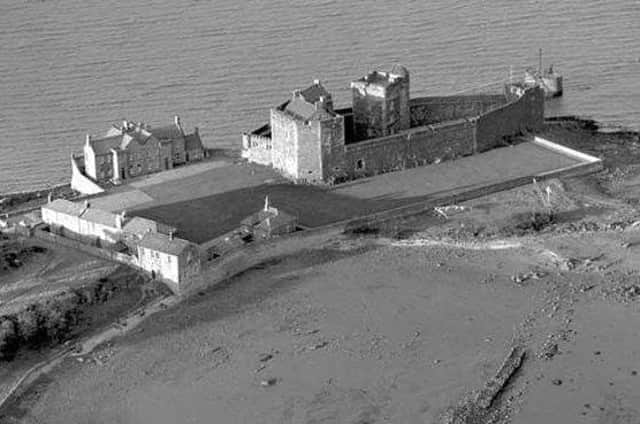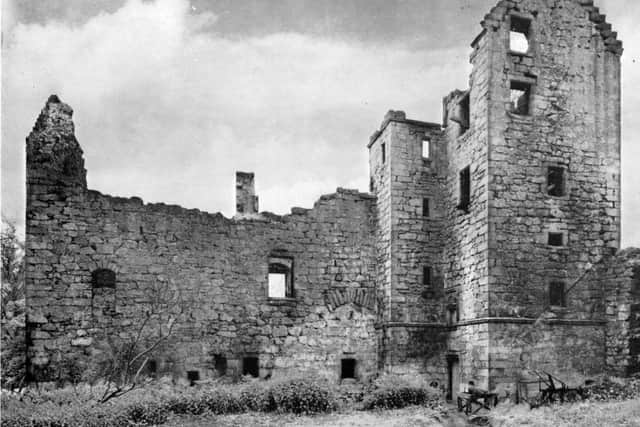Looking back with Ian Scott on the history of Falkirk district's castles


“What a pity we have to go to Stirling or Edinburgh” he said. When I recovered my composure I was able to point out that within a few miles we had at least half a dozen stone castles from Blackness in the east to Castlecary in the west which date back to the most turbulent periods of our history. It is true that only one of them, Blackness, is an official ‘visitor attraction’ but they can all be seen and appreciated from the outside at least and their stories transport us back to the days of feud, civil war and invasion when Scotland was a lawless and almost ungovernable place where burning down your neighbour’s house was the normal way of settling an argument.
Blackness dates from 1449 when Sir George Crichton, the Admiral of Scotland fortified the promontory which juts out into the Forth and created the ship-shaped castle we know today with towers at the ‘stem’ and ‘stern’ and a ‘mainmast tower’ in the centre. King James II liked it so much that he grabbed it a few years later and it has been in state hands ever since as royal prison, army barracks, ammunition store and now tourist attraction. The castle’s dramatic appearance has caught the eye of film producers and parts of The Bruce, Macbeth and Outlander were filmed there.
Advertisement
Hide AdAdvertisement
Hide AdNot far from Muiravonside Church stands Haining or Almond Castle built in the 14th century for the Crawford family but best known for its association with the mighty James Livingston, first Earl of Callendar, who lived there in the early 1600s. It is a big square tower which in recent years was cut off from the public because it stood within the grounds of Stein’s works at Manuel. With the works gone there is a chance that it might be consolidated and made fit to receive visitors though not this time the ones with the scaling ladders and burning brands!


In 1566 in Torwood, Sir Alexander Forrester built a huge castle appropriate to his status as the keeper of the Royal Forest and strong enough to resist the regular attacks from his usual enemies the Bruces of Airth and the Livingstons of Callendar. It was acquired in the 1950s by the late Gordon Millar whose unusual ‘restoration’ project occupied the last forty years of his life. What will happen to it next is unclear.
Of course those Bruces of Airth also had a castle to defend and it survives as the Airth Castle Hotel. An early building probably made of wood was burned down in the Wars of Independence and a second was destroyed in 1488 after the Battle of Sauchieburn. What remains today is a huge L shaped fortress from the early 1500s with a fairy tale castle front added by David Hamilton in the 1820s which is the main entrance to the hotel.
Along with these four we also have the fine Kinneil House in Bo’ness; the sadly diminished Elphinstone Tower near Dunmore, Castlecary, now a well-restored private house and of course Callendar House itself, once known as Callendar Castle. Taken together I think these would make a great historic castle trail a bit like the excellent one over in Clackmannan. And walking from Blackness to Castlecary would keep us fit if nothing else.